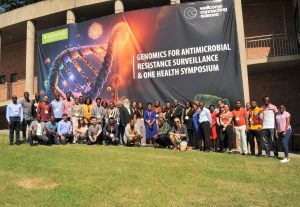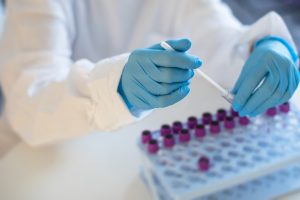CoughWatchSA is a mobile application where users can register and report their respiratory symptoms on a weekly basis. The aim of this platform is to identify and monitor acute respiratory tract infections (ARI) which may potentially include influenza, RSV and COVID19. South Africa may have reached its peak in the cumulative number of cases, but there may be a potential for a second wave of infections. In addition to this, the influenza season has not begun in South Africa and CoughWatchSA may assist in detecting early on the onset of the second wave of COVID19 cases or the beginning of the influenza season. This platform will run as a pilot for the remainder of this year and will be officially launched as a complementary surveillance platform to current disease surveillance systems.
Why is it important for public health officials to monitor and track diseases?
The tracking and monitoring of diseases plays an important role in the analysis and reporting on the burden of diseases, to inform public health action for the reduction of morbidity and mortality, as well as improving the health of the general population. In the case of outbreaks, collecting data on confirmed cases allows for the tracking and monitoring of the spread of these diseases; identifying who is at risk of severe illness and mortality, and using this data to implement strategies to reduce the impact of the spread and ultimately save lives.
How do public health officials track and monitor diseases?
When individuals get sick and can’t control the illness on their own, they would typically seek medical care. Depending on the illness, a medical practitioner will diagnose and determine whether this illness meets what we call a case definition for diseases of public health significance. Public health officials have set up surveillance systems in hospitals, clinics and various health facilities that allow for the tracking of all the cases that meet the case definition at these facilities. The specimens of these patients are sent to the lab for confirmation. All of this data is collected across the country and used for reporting, analysis and informing public health action.
What are some of the limitations of current disease surveillance platforms?
Tracking and monitoring of diseases is limited by a number of factors, which make it difficult to have real-time data on incidence of diseases. These include limited testing capacity, severity of illness and access to medical resources. All of these factors make it difficult to detect all cases of various diseases and delays the reporting and early detection of cases, which may have an impact on the required public health response. It is also very difficult to assess health-seeking behaviour in the population by relying only on the facility-based disease surveillance platforms.
What is digital participatory surveillance and how will it assist with current challenges?
Digital participatory surveillance is a platform for monitoring and tracking diseases in the population through user-reporting of health information. This is typically done through a mobile/web application or online survey administered through various social media platforms. This platform has been used effectively in Europe, Australia and North America for over ten years. This platform is able to detect outbreaks for up to a week or two earlier than traditional surveillance platforms and has been shown to be a complementary disease surveillance platform to current facility-based disease surveillance. In lower to middle income settings, this platform has the potential to assist disease surveillance where testing capacity or access to medical resources is extremely limited. In addition, through user-reporting of health information, we may identify patterns in health-seeking behaviour which is often very limited in the current setting.




